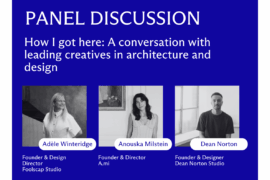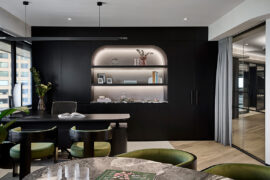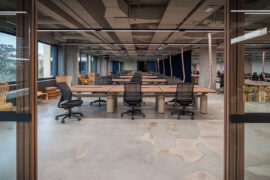A Singapore river warehouse dating back to 1895 has been restored as The Warehouse Hotel.
Previously a hotbed of secret and undercover goings on, the building is now a striking 37-room destination with an emphasis on heritage and local culture.
The Warehouse Hotel, located on the Straits of Malacca trade route, was designed by the award-winning local agency Asylum, and features new double-high ceilings and peaked roofs, juxtaposed against the original industrial details of the over-century-old space.
The space, originally known in Asia as a godown, was recognised as a hotbed of activity for secret societies, business deals and underground spirit distilling in the late 19th and early 20th centuries. This history was channeled into the design of the space, with local design and culture at the core of the design ethos for Asylum. In-room minibars, uniforms, bicycles, artwork, guidebooks and coffee & tea were all locally sourced in order to properly an authentic Singaporean experience. This aesthetic and sense of belonging is further reflected in the hotel’s rooftop infinity pool, which enables riverbank views and a sense of connection to the neighbourhood’s mysterious history.
“Hotels are a natural extension of our strength as a hospitality group – both in concept design and guest experience,” says Wee Teng Wen, Managing Partner, of the Lo & Behold Group, managers of The Warehouse Hotel “The fact that The Warehouse Hotel is located in a ‘godown’ is particularly unique and creates the opportunity to offer something with depth and soul. We’re proud that this heritage project is our group’s inaugural hotel – owned, designed and operated 100% locally.”
The hotel’s signature restaurant and bar, Po, was crafted by Chef-Partner Willin Low, who designed his dishes to homage to the tradition of the city of Singapore. Po’s cocktail programme charts the history of the building through its three phases of life – rustic, spice driven concoctions, representing the building’s life as a spice warehouse; house-crafted spirits paying tribute to the forbidden underworld distilleries; and finally fresh flirty cocktails inspired by the building’s era as an infamous disco.
From the room design to the public spaces, traditional design elements, such as traditional rattan and natural leather, bring a sense of history to the modern industrial feel of the space; recalling the secret history of the warehouse, yet with eyes firmly set on the future.
INDESIGN is on instagram
Follow @indesignlive
A searchable and comprehensive guide for specifying leading products and their suppliers
Keep up to date with the latest and greatest from our industry BFF's!
The new range features slabs with warm, earthy palettes that lend a sense of organic luxury to every space.

Gaggenau’s understated appliance fuses a carefully calibrated aesthetic of deliberate subtraction with an intuitive dynamism of culinary fluidity, unveiling a delightfully unrestricted spectrum of high-performing creativity.

How can design empower the individual in a workplace transforming from a place to an activity? Here, Design Director Joel Sampson reveals how prioritising human needs – including agency, privacy, pause and connection – and leveraging responsive spatial solutions like the Herman Miller Bay Work Pod is key to crafting engaging and radically inclusive hybrid environments.

Winner of a 2015 Good Design Award, the Zip HydroTap has had a colour make over.
The internet never sleeps! Here's the stuff you might have missed

Featuring beloved Melbourne designers, this is a must-attend conversation for emerging designers and anyone interested in the pursuit of creativity.

Setting the tone for McCormack’s HQ is Elton Group’s Eveneer WoodWall and Eveneer Raw in Ravenna – wrapping walls, ceilings and bespoke joinery in a dark, matte elegance. The seamless pairing delivers a cohesive, high-performance finish that anchors Studio 103’s luxurious, hotel-inspired workplace design.

The client’s brief was clear: create an environment that honoured FIN’s heritage while embracing its future. For Intermain, that meant rejecting the idea of the corporate, “boring” office and instead leaning into a space that would inspire, connect, and surprise.